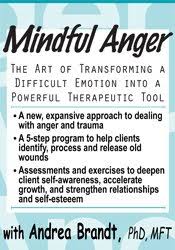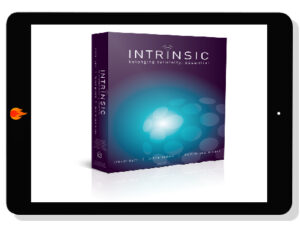After this event I felt noticeably lighter, freer. I sensed that there was value for me, and for others, in tapping into anger, getting it moving through us, and then releasing it.
Andrea Brandt – Mindful Anger, The Art of Transforming a Difficult Emotion into a Powerful Therapeutic Tool
Both of my parents repressed their anger. They were like two simmering volcanoes ready to blow at any moment. They treated each other, and me, with the kind of pervasive abuse that is harder to see than hitting. I too, eventually developed this unhealthy, passive-aggressive way of getting my feelings out.
By the time I got married, I was totally cut off from my feelings. I intellectualized my experiences. One day in group therapy, a man made a remark that triggered my repressed anger. I stood up, started screaming, and began swinging my purse around in the air. I had become the erupting volcano. I totally lost control.
After this event I felt noticeably lighter, freer. I sensed that there was value for me, and for others, in tapping into anger, getting it moving through us, and then releasing it.
I discovered that anger, it turned out, wasn’t a bad thing. Rather, it was the key to emotional freedom!
When I first became a therapist, there was very little information about dealing with anger – either the client’s or our own. Then, as strategies did begin to emerge – I found that they didn’t really work. Frustrated and wanting more for my clients, I set out to discover what was missing. I wanted to know what more needed to be done to help people truly heal.
After years of trial and error working with thousands of clients, I finally found the answer. I call it Mindful Anger.
The 5-step program for processing and releasing anger is based on mindfulness and has delivered healing for my clients, with an amazing 80% success rate in my practice. I will walk you step by step through the cutting edge strategies and comprehensive transformational process that can bring life-changing wisdom to patients of all types – attachment wounds, abuse and trauma. Find out how to use anger as a key to unlocking your patients’ past and present, moving them to greater self-awareness and emotional release, empowering them to make lasting change. Walk away with simple exercises, assessments and tools that you can use to engage your clients in the mindful anger process.
Communicate how the application of mindfulness skills can create treatment breakthroughs for clients with any anger style.
Explore techniques of mindfulness and body awareness that help clients identify and effectively respond to physical, mental, and emotional cues to anger.
Evaluate the secret mechanism within the chain reaction of anger that provides the antidote to impulsivity.
Implement 5 powerful steps to support clients in identifying and processing old wounds that contribute to problems with healthy expressions of anger.
Determine the challenges of passive-aggressive behavior and utilize clinical tools for helping clients to eliminate this unhealthy pattern of coping with anger.
Utilize mindful anger strategies to assist clients in improving self-esteem and developing resilience.
Would you like to receive Andrea Brandt – Mindful Anger, The Art of Transforming a Difficult Emotion into a Powerful Therapeutic Tool ?
The Truth About Anger
Costs of Un-mindful Anger
A New, Expansive Approach to Dealing with Anger and Trauma
Processing Anger: Why Anger In Must Become Anger Out
Benefits of Mindful Anger: How This Volatile Emotion Heals
Purposes of Anger
Emotional Mindfulness & Body Awareness Skills
Leverage the Power of Mindfulness
Use Emotional Mindfulness to Get in Touch with Our Inner World
Distinguish Sensations from Emotions
Transmute Anger into Emotional Wisdom
Overcome Common Obstacles to Mindfulness
The Anatomy of Anger
Predominant Anger Styles
Common Triggers to Anger
Passive Aggressive Behavior
The Impulse That Precedes the Emotion
Physical, Mental and Emotional Anger Cues
The Antidote to Impulsivity
Faulty Beliefs and Unrealistic Expectation
Strategies for Handling Anger in the Therapeutic Setting
The Discomfort of Anger: Help Clients Stay in the Window of Tolerance
Monitor the Client’s Physiology: Tracking the Body
Facilitate Affect Regulation
Mobilize Client Resources to Meet the Discomfort of Change
Stay within Your Own Window of Tolerance
Beneath Anger: Five Steps to Uncovering and healing Childhood Wounds
How Attachment-Related Issues Lead to Anger
Step 1: Access Anger through Breath Work
Step 2: Discover Old Wounds
Step 3: Mobilize Energy through Telling the “Story”
Step 4: Provide the Missing Experience
Step 5: Perform an Emotional Release
Mindful Anger Strategies to Improve Relationships and Self-Esteem
Develop Resilience through Self-Compassion and Gratitude
Replace Reactivity with Research-Based Empathy








